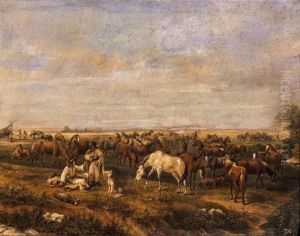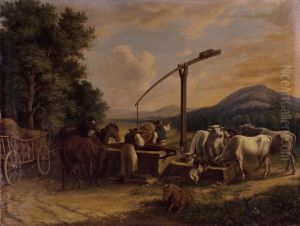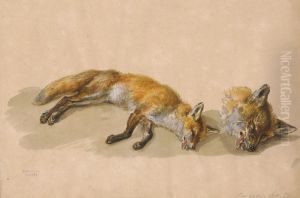Karoly Klette Paintings
Károly Klette was a Hungarian artist, born in 1871, who is not as widely known as some of his contemporaries. Despite the relative obscurity, Klette was a significant figure in the Hungarian art scene of the early 20th century. His work was characterized by an interest in capturing the everyday lives of people, with a particular focus on the working class and the peasantry. Klette's approach to art was informed by the social realities of his time, and he often infused his work with a sense of social commentary.
Klette was educated in the arts in Hungary and may have spent time abroad, which was a common practice for many European artists of the period who sought to gain exposure to different artistic movements and techniques. Throughout his career, Klette worked in various mediums, including painting and illustration, and his style evolved over time, reflecting the influences of different art movements such as Realism, Impressionism, and perhaps elements of Post-Impressionism.
Despite the lack of extensive documentation on Károly Klette's life and work, it is clear that he contributed to the cultural and artistic fabric of Hungary. His paintings often depicted rural Hungarian landscapes, urban scenes, and genre scenes with a focus on human figures. Klette's work was part of the larger narrative of Hungarian art, which was seeking to define its national identity and aesthetic during a period of significant political and social change.
Klette lived through World War I and the subsequent turmoil in Europe, which would have impacted the art world and his own artistic production. He died in 1942, during the Second World War, a time when Hungary was facing its own set of challenges. Károly Klette's legacy, like that of many artists of his era, is a testament to the rich cultural history of Hungary and the enduring power of art to reflect the human experience.


